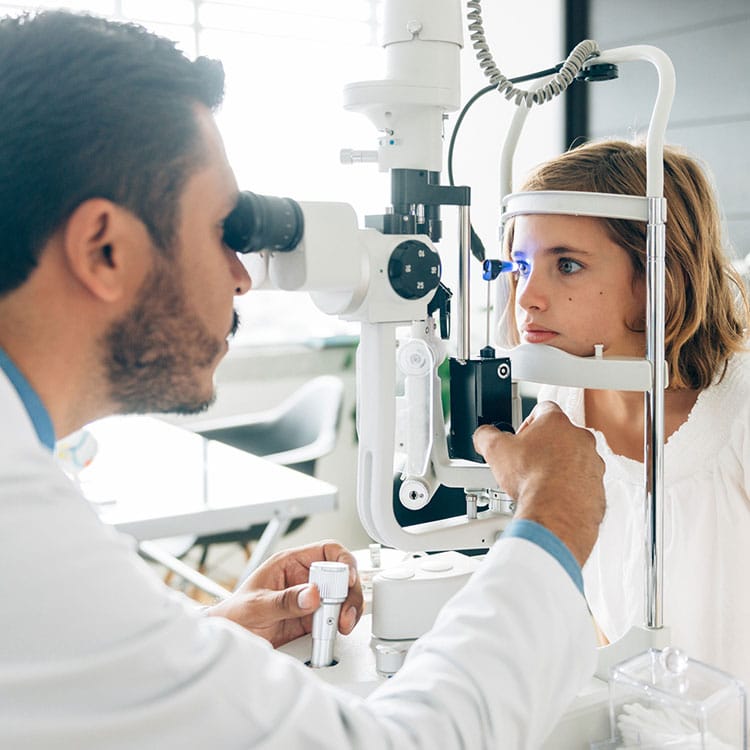Key Takeaways
- Regular eye exams are crucial for maintaining overall eye health and detecting potential issues early.
- Understanding the components and frequency of eye exams can empower individuals to take charge of their vision health.
- Eye health is essential at every stage of life, from childhood through senior years.
Table of Contents
- Why Eye Exams Matter
- Components of a Comprehensive Eye Exam
- How Often Should You Have Your Eyes Checked?
- Common Eye Issues Detected During Exams
- Eye Health in Children and Teens
- Eye Care Tips for Adults
- Protecting Your Vision as You Age
- The Role of Technology in Modern Eye Care
In an increasingly digital world, where screens are a staple of our daily routines, the importance of regular eye examinations cannot be overstated. These check-ups not only serve to assess vision clarity but also act as a crucial preventive measure for ensuring long-term eye health. Understanding how frequent visits to an optometrist near me can impact your ocular wellness provides a foundation for better vision longevity. Eye exams empower us with knowledge about current eye conditions and let us catch potential problems before they escalate into more severe issues. Without these regular checks, one might miss the early signs of eye conditions that could impair vision permanently.
The information gained from comprehensive eye exams can significantly alleviate future concerns for individuals of all ages. Knowing what to expect during the examination process and understanding the frequency with which these exams should occur can lend peace of mind and ensure your visual health stays top-notch throughout your life. By staying well-informed and engaged with ongoing eye care, you secure a better outlook—literally and figuratively.
Why Eye Exams Matter
Eye exams go far beyond simply determining how well you can see. They are comprehensive evaluations that assess the overall health of the eyes and can even provide insights into the general health status of an individual. During these examinations, eye care professionals can identify severe conditions like glaucoma, macular degeneration, and diabetic retinopathy, often before symptoms are apparent. Eye exams can also detect potentially life-altering diseases such as diabetes and high blood pressure in their early stages. This early detection is crucial because it allows for timely intervention, which can significantly alter the course of the disease for the better.
Components of a Comprehensive Eye Exam
A comprehensive eye exam incorporates several tests, thoroughly assessing your ocular health. The process usually begins with a visual acuity test, measuring how well you can see at various distances. This is followed by a slit-lamp examination, where your eye care provider looks at the structures at the front of the eyes under magnification. Pupil dilation is another crucial aspect of the exam, allowing the doctor to view the back of the eye. Additionally, tests to measure intraocular pressure help detect glaucoma. Each component plays a vital role in painting a complete picture of an individual’s eye health, ensuring that no aspect is overlooked.
How Often Should You Have Your Eyes Checked?
The frequency with which one should examine their eyes largely depends on age and health status. Generally, infants should have their first eye exam at six months, with follow-ups at age three and before starting school. School-aged children and teens should have an exam every year or two. Exams are typically recommended for adults aged 20 to 39 every two to three years. Those between 40 and 64 should aim for every two years, while those over 65 should have annual exams. Individuals with specific risk factors, such as a family history of eye disease or health conditions like diabetes, may need more frequent assessments.
Common Eye Issues Detected During Exams
Regular eye exams can diagnose and manage a variety of common eye conditions. Issues like myopia (nearsightedness), hyperopia (farsightedness), astigmatism, and presbyopia can be identified. Early detection is critical in managing these conditions to prevent them from worsening. More severe illnesses, such as cataracts and age-related macular degeneration, can have a profound effect on one’s quality of life but are manageable if caught early. Identifying these issues during a routine exam can lead to better management strategies and preserve sight longer.
Eye Health in Children and Teens
Eye health is critical during childhood and teenage years, as vision plays a pivotal role in learning and development. Early detection of conditions such as amblyopia (lazy eye) or strabismus (crossed eyes) through regular exams can lead to timely treatment, often resulting in better visual development. Children may not always be able to articulate or recognize vision problems, emphasizing routine exams’ importance.
Eye Care Tips for Adults
For adults, maintaining eye health can often be managed with lifestyle adjustments. A diet that includes leafy greens, foods high in omega-3 fatty acids, and vitamins C and E can improve eye health. Moreover, regular exercise supports overall health, which benefits the eyes. Adults should also be mindful of screen time and take regular breaks to reduce eye strain. Protecting eyes from UV rays with sunglasses and abstaining from smoking are additional ways to preserve vision health.
Protecting Your Vision as You Age
With aging comes natural changes in vision and an increased risk of eye diseases such as cataracts and glaucoma. These conditions are manageable and often treatable if caught early through regular eye exams. Seniors can protect their vision by following the specific advice of their eye care providers and maintaining consistent, comprehensive check-ups. Treatment methods advancements mean maintaining eyesight into old age is more achievable than ever.
The Role of Technology in Modern Eye Care
Modern technology has greatly enhanced the field of eye care, making diagnostic processes more precise and treatments more effective. Tools like high-definition retinal imaging and advanced computer-based visual field testing allow eye care providers to detect diseases at their earliest, most treatable stages. These technological advancements ensure that patients receive a high level of care tailored to meet the individual needs of each patient’s ocular health, paving the way for improved outcomes and a better quality of life.



